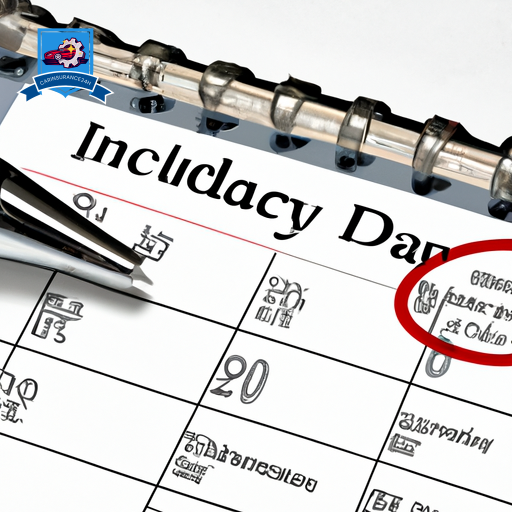In the domain of insurance, understanding the nuanced distinctions between bodily injury and property damage limits is paramount for policyholders.
Bodily injury coverage pertains to the financial compensation for physical harm to individuals, whereas property damage coverage addresses the costs associated with damage to or loss of property.
These limits not only delineate the extent of coverage but also considerably impact the premiums and financial protections available under an insurance policy.
As one navigates these intricate details, a deeper exploration into how these differences influence policy choices and potential claims scenarios becomes indispensable for making informed decisions.
Understanding Insurance Limits

Insurance limits, the maximum amount an insurer will pay for a covered loss, are foundational to understanding how policies protect against financial risk. These limits are essential in determining the extent of protection a policyholder receives in the event of a claim. They directly influence the premiums paid and potentially affect the financial stability of the insured in the aftermath of an incident.
Insurance policies are structured to offer a balance between coverage and cost, with limits serving as a key parameter in this equilibrium. A higher limit generally translates to broader protection but also results in higher premiums. Conversely, opting for lower limits can reduce premium costs but may leave the policyholder more exposed to out-of-pocket expenses if damages exceed the policy’s maximum payout.
Policy renewal periods offer an opportune moment for policyholders to reassess their coverage needs. Life changes, such as acquiring new assets or changes in financial status, may necessitate adjustments to insurance limits. Failure to adequately adjust these limits can lead to underinsurance, where the coverage is insufficient to fully compensate for losses, or overinsurance, where the policyholder is paying for more coverage than necessary.
Coverage cancellation is a severe consequence that might arise from misunderstanding or mismanaging insurance limits. For instance, exceeding policy limits without prompt communication with the insurer or failing to adjust limits appropriately may lead to disputes or cancellation of coverage. This underscores the importance of a clear understanding and strategic management of insurance limits to guarantee continuous and adequate protection against financial risks.
Defining Bodily Injury Coverage

Bodily Injury Coverage is a vital aspect of liability insurance, providing protection against the costs associated with injuries to others for which the policyholder is deemed responsible.
It is imperative to comprehend the coverage scope, including its limitations and exclusions, to fully understand the extent of protection offered.
Additionally, the process for filing claims under this coverage must be clearly understood to guarantee timely and effective compensation for covered injuries.
Coverage Scope Explained
Understanding the scope of bodily injury coverage is essential for comprehending how insurance policies protect individuals against financial liabilities arising from physical harm to others. This facet of insurance is crucial, as it encompasses expenses related to medical treatments, loss of income, and legal fees incurred by the injured party.
Coverage comparisons reveal significant policy differentiation, highlighting the necessity of thorough evaluation to guarantee adequate protection. Policies vary in their coverage limits and conditions under which they apply, making it imperative for policyholders to grasp the specifics of their coverage.
Limitations and Exclusions
While bodily injury coverage provides essential financial protection against claims of physical harm, it is important to recognize the policy’s limitations and exclusions to fully understand its scope.
- Intentional injuries caused by the policyholder are not covered.
- Injuries sustained by the policyholder themselves are typically excluded.
- Coverage lapses due to non-payment or not adhering to policy terms can nullify protection.
- Policy renewals may come with changes in terms or conditions that could affect coverage.
- Certain activities or locations might be excluded from coverage, such as injuries resulting from high-risk sports or in areas deemed unsafe.
Understanding these limitations and exclusions is critical for policyholders to make sure they have the appropriate level of protection and are aware of the circumstances under which their coverage may not apply.
Claim Filing Process
Initiating a claim for bodily injury coverage necessitates a thorough understanding of the procedural steps involved, starting with the immediate reporting of the incident to the insurance provider. This initial step is critical, as timely notification can greatly impact the claim’s processing.
Following the initial report, document submission becomes pivotal. Claimants are required to meticulously compile and submit all relevant medical records, police reports, and any other evidence substantiating the claim. This phase demands precision to make sure all necessary documentation is accurately presented to support the claim. Failure in proper document submission can lead to claim denial, underscoring the importance of a detailed and methodical approach throughout the claim filing process.
Each step, from reporting to documentation, plays an important role in the claim’s outcome.
Exploring Property Damage Coverage

Property damage coverage, an essential component of liability insurance, provides financial protection against damages to another person’s property resulting from an accident for which the insured is responsible. This coverage is pivotal in mitigating financial losses and making certain that the insured can fulfill their obligations without enduring undue financial strain. It encompasses a range of damages, from minor repairs to significant replacements, and is a critical aspect of a thorough insurance policy.
When considering property damage coverage, it’s important to understand how repair costs and deductible impacts play into the overall protection offered. Here are key points to keep in mind:
- Coverage Limits: The maximum amount the insurance will pay for property damage. It’s important to choose a limit that adequately reflects the potential damage costs.
- Deductible Amounts: The out-of-pocket cost the insured must pay before the insurance coverage kicks in. Higher deductibles can lower premium costs but increase out-of-pocket expenses during a claim.
- Repair Costs: Insurance covers the cost of repairs to damaged property, but the extent of coverage can vary depending on the policy terms.
- Replacement Costs: In cases where property is deemed beyond repair, coverage may extend to the replacement cost, subject to the policy’s limits.
- Deductible Impacts: The choice of deductible can significantly affect both the premium and the coverage effectiveness. A higher deductible may reduce the premium but increase the financial burden in the event of a claim.
Understanding these aspects of property damage coverage ensures that policyholders can make informed decisions, balancing premium costs with effective risk management.
Key Differences Highlighted

Understanding the distinctions between bodily injury and property damage limits is crucial for policyholders aiming to navigate the complexities of liability insurance effectively. While both coverages serve as critical components of liability insurance, they address different areas of liability and offer protection against varying types of claims. The key differences between these limits not only influence the scope of coverage but also carry distinct legal implications and financial consequences, which policyholders must comprehend to guarantee adequate protection.
Bodily injury limits refer to the maximum amount an insurance policy will pay for injuries that an insured individual causes to others. This coverage is pivotal in cases of accidents where third parties sustain injuries, covering medical expenses, lost wages, and, in some instances, legal fees if the policyholder is sued. The legal implications here revolve around the insured’s liability for personal injuries, with financial consequences including potential out-of-pocket expenses if the costs exceed the policy’s limits.
Conversely, property damage limits pertain to the compensation an insurance policy provides for damage caused by the insured to someone else’s property. This includes, but is not limited to, vehicle repairs, structural damage to homes, and replacement of personal belongings. Financial consequences in this domain involve repairing or replacing damaged property, while the legal implications may include claims for depreciation and loss of use.
These differences underscore the importance of carefully selecting coverage limits. Failing to secure adequate limits can result in significant financial strain and legal challenges, highlighting the necessity for policyholders to assess their potential liability meticulously.
Impact on Insurance Premiums

Choosing the right bodily injury and property damage limits directly influences the cost of insurance premiums, reflecting the insurer’s risk in providing coverage. Insurers meticulously evaluate numerous risk factors and premium calculations to determine the rates they offer. Higher coverage limits are typically associated with higher premiums because they represent a greater potential financial obligation for the insurer in the event of a claim. Conversely, opting for lower limits can reduce the premium but may expose the policyholder to significant out-of-pocket expenses if claims exceed those limits.
To understand how bodily injury and property damage limits impact insurance premiums, consider the following key points:
- Risk Assessment: Insurers analyze the policyholder’s risk profile, including driving history and geographic location, to gauge the likelihood of claims. Higher risk factors lead to higher premiums.
- Coverage Limits: Choosing higher limits for bodily injury and property damage increases the insurer’s liability, directly impacting the cost of premiums.
- Deductibles: Opting for a higher deductible can lower the premium, as it reduces the insurer’s potential payout on claims.
- Claims History: Individuals with a history of claims may face higher premiums because they are perceived as higher risk.
- Policyholder’s Credit Score: In some jurisdictions, credit scores are used in premium calculations, with better scores potentially leading to lower premiums.
Understanding the balance between adequate coverage and affordable premiums is essential. By carefully selecting bodily injury and property damage limits, policyholders can manage their insurance costs while ensuring they have sufficient protection against potential claims.

As we steer our focus to exploring coverage options, it is essential to grasp the complexities surrounding the depths of available coverage and the importance of selecting limits that align with individual needs and risk exposure.
Understanding the nuances between bodily injury and property damage limits can greatly impact the efficacy and financial implications of one’s insurance policy.
This segment aims to provide a clear pathway for individuals to make informed decisions regarding their coverage options, emphasizing the balance between protection and cost.
Understanding Coverage Depths
Exploring coverage options requires a thorough examination of the differences between bodily injury and property damage limits to guarantee complete protection. Understanding these distinctions is essential for making informed choices about your insurance policy. It involves delving into policy definitions and conducting a thorough risk assessment to tailor coverage to your specific needs.
- Policy Definitions: Know the specific terms and conditions of your insurance policy.
- Risk Assessment: Evaluate the potential risks to determine adequate coverage levels.
- Customization Options: Explore the flexibility to adjust limits and coverages.
- Exclusions and Limitations: Understand what is not covered under your policy.
- Consultation with Professionals: Seek advice from insurance experts to navigate complex policy details.
This structured approach ensures that policyholders are well-equipped to select the most appropriate coverage options.
Choosing Appropriate Limits
Choosing the proper limits for bodily harm and property harm coverage is an important step in ensuring thorough insurance protection. When exploring coverage options, individuals must weigh the potential policy costs against their risk exposure.
Opting for higher limits can offer greater protection but may also increase the policy’s overall cost. Conversely, lower limits may reduce upfront costs but potentially expose the policyholder to significant out-of-pocket expenses in the event of a substantial claim. To strike a balance, policyholders should consider their assets, risk profile, and the likelihood of claims.
Additionally, exploring discount benefits offered by insurers can mitigate the financial impact of selecting higher limits, ultimately securing robust coverage without disproportionately escalating policy costs.
Case Examples Explained

To illustrate the distinction between bodily injury and property damage limits, let’s examine specific case examples. These instances not only highlight the practical implications of these limits but also shed light on how legal precedents and liability disputes can have a substantial influence on outcomes in insurance claims.
-
Case 1: Multi-Vehicle Collision A multi-vehicle collision resulted in both significant injuries to several individuals and extensive damage to multiple cars. The bodily injury limit of the at-fault driver’s insurance was quickly exhausted due to the high medical costs, contrasting sharply with the property damage limit, which was sufficient to cover the damages to all vehicles involved. This case underscores the importance of adequate coverage in both categories to fully protect against potential liabilities.
-
Case 2: Pedestrian Accident A pedestrian suffered severe injuries after being hit by a car, leading to a lengthy hospital stay and long-term rehabilitation. The bodily injury liability played an important role in covering the pedestrian’s medical expenses, highlighting how these limits directly impact the victims’ ability to recover and the at-fault party’s financial responsibility.
-
Case 3: Property Damage Without Bodily Injury A scenario where a vehicle accidentally crashed into a storefront, causing significant property damage but no bodily injuries. The property damage limits were sufficient to cover the repair costs, demonstrating scenarios where bodily injury limits are not implicated.
-
Case 4: Insufficient Coverage Leads to Lawsuit An accident with inadequate bodily injury coverage led to the victim suing the at-fault driver for additional compensation. This case illustrates the legal and financial ramifications of insufficient coverage limits.
-
Case 5: Extensive Claim Scenario An instance where both bodily injury and property damage limits were adequately assessed and met the costs associated with an accident, showcasing the ideal insurance outcome where all parties’ losses are sufficiently covered without the need for additional legal actions.
Frequently Asked Questions
How Do State Laws Influence the Minimum Required Limits for Bodily Injury and Property Damage Coverage?
State laws notably influence the minimum required limits for bodily injury and property damage coverage, with state comparisons highlighting diverse approaches. These laws dictate coverage trends, ensuring structured, concise, and logical guidelines for insurance requirements across jurisdictions.
Can You Increase Your Bodily Injury and Property Damage Limits After an Accident Has Occurred?
Increasing your bodily injury and property damage limits post-accident is generally not permissible. Policy adjustments must precede claim timing, ensuring adequate coverage is in place prior to any incidents to avoid financial and legal discrepancies.
How Do Bodily Injury and Property Damage Limits Interact With Umbrella Insurance Policies?
In the domain of insurance, umbrella policies act as a protective canopy, extending coverage scope beyond standard limits for bodily injury and property damage. These policies effectively manage risk, albeit at varying umbrella policy costs.
Are There Specific Scenarios Where Bodily Injury and Property Damage Limits Might Be Considered Insufficient for Comprehensive Protection?
Yes, specific scenarios exist where bodily injury and property damage limits may be deemed inadequate, potentially resulting in coverage gaps. High-cost accidents and liability exceptions highlight the need for thorough protection beyond standard limits.
How Do Bodily Injury and Property Damage Claims Impact Future Insurance Quotes and the Ability to Switch Insurance Providers?
In the paradoxical world of insurance, filing bodily injury or property damage claims can lead to premium increases, ironically making safety more expensive. This escalation can also limit provider options, complicating the search for competitive rates.










